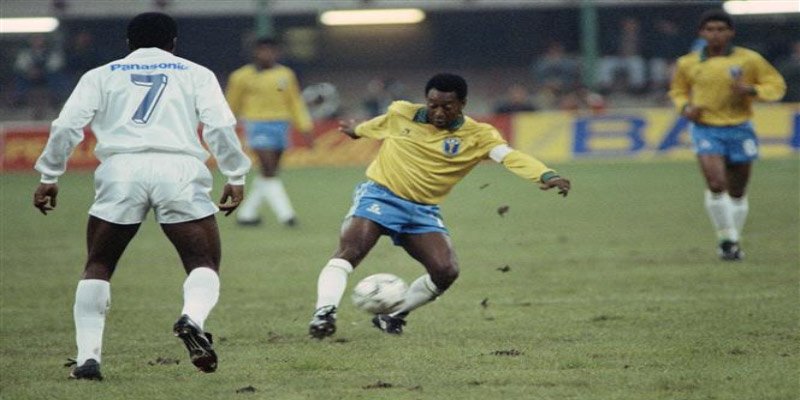
The Legend of Pelé: A Football Icon Beyond Time
Pelé: The Journey from Santos to World Fame
Pelé’s journey is a testament to resilience, talent, and determination. Born Edson Arantes do Nascimento in 1940 in Três Corações, Brazil, Pelé‘s love for soccer blossomed at an early age. Despite facing numerous challenges, he emerged as a force to be reckoned with, ultimately achieving global fame.
Early Life and Beginnings at Santos
Growing up in a modest family, Pelé‘s affinity for soccer developed through street games and local competitions. By the age of 15, he joined Santos FC, where he quickly made a name for himself. His early displays of skill and intelligence on the field demonstrated a prodigious talent that would soon capture the world’s attention.
Santos provided Pelé with the perfect environment to hone his craft. With a supportive team and coaching staff, he flourished, showcasing an innate ability to score and create opportunities for his teammates. The harmony between Pelé and Santos laid the foundation for a partnership that would lead to unprecedented success.
Rise to Stardom
Pelé’s breakthrough came in 1957 when he made his debut for the Brazilian national team. His performances were met with great acclaim, and he soon became an integral part of Brazil’s squad.
As he continued to grow as a player, so did his reputation. Clubs from around the world expressed interest in signing him, but Pelé remained loyal to Santos, further cementing his status as a club legend. His dedication and commitment resonated with fans, who admired his love for the game and his willingness to represent his hometown club.
Transition to Global Icon
In the years following his initial successes, He transitioned from a promising young talent into a global icon. His performances in domestic leagues, coupled with his appearances in international tournaments, garnered widespread media coverage and fanfare.
By the time he won his third World Cup in 1970, Pelé had become synonymous with soccer itself. His popularity soared, and he was celebrated not just in Brazil, but across every corner of the globe. He used his platform to promote the sport, participate in various exhibitions, and even engage with political leaders, enhancing his status as a true ambassador of football.
The Evolution of Pelé’s Playing Style
he’s playing style evolved over his career, adapting to the changing dynamics of the game while maintaining his core principles of skill and creativity. His ability to innovate and reinvent himself allowed him to remain relevant throughout his time as a professional player.
Early Playing Style: The Art of Dribbling
In his youth, His was renowned for his exceptional dribbling ability. His impressive footwork and agility enabled him to navigate through defenses with ease. He possessed a unique flair that captivated audiences, combining speed with precise control.
During his early years, he often relied on his individual skills to create goal-scoring opportunities. His combination of pace and creativity made him a formidable opponent, as defenders struggled to contain his unpredictable movements.
Development of Tactical Awareness
As Pelé matured as a player, he began to develop a deeper understanding of the tactical aspects of football. He enhanced his vision of the game, learning to read plays and anticipate movements.
This evolution allowed he to transition seamlessly between roles, whether as a striker or playmaker. He became adept at creating space for his teammates and orchestrating attacking plays. The ability to adapt his style demonstrated Pelé’s football intelligence and willingness to evolve, setting him apart from his contemporaries.
Mastery of Set Pieces and Aerial Play
Later in his career, Pelé expanded his repertoire by mastering set pieces and aerial play. His ability to score from free-kicks and corners added another dimension to his already lethal game.
With his remarkable heading ability, Pelé became a constant threat in the box. He utilized his physical attributes while maintaining his finesse, often scoring spectacular goals that showcased his versatility. This mastery of different aspects of the game further solidified Pelé‘s place among the legends of soccer.





